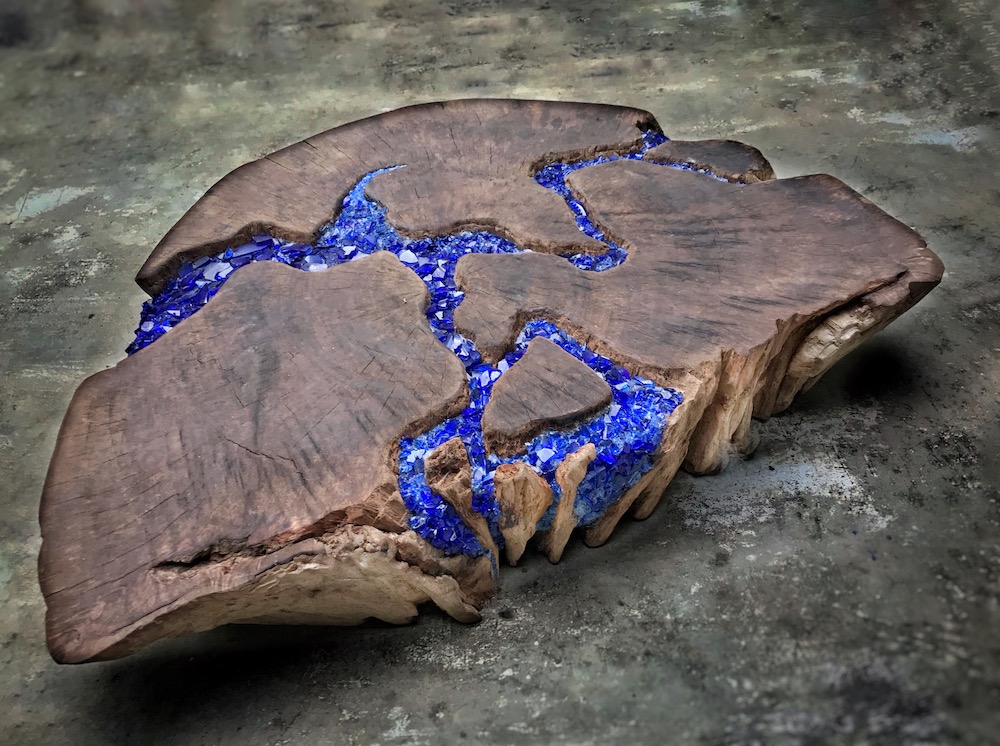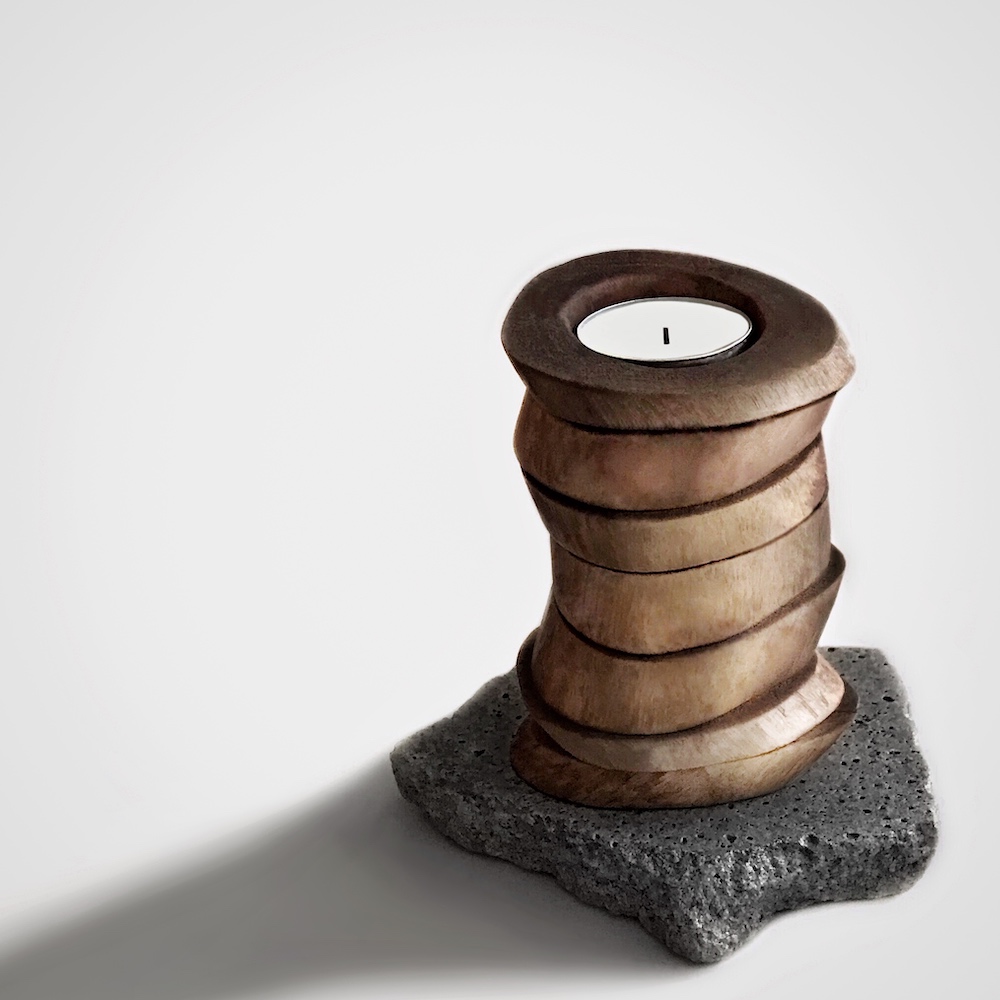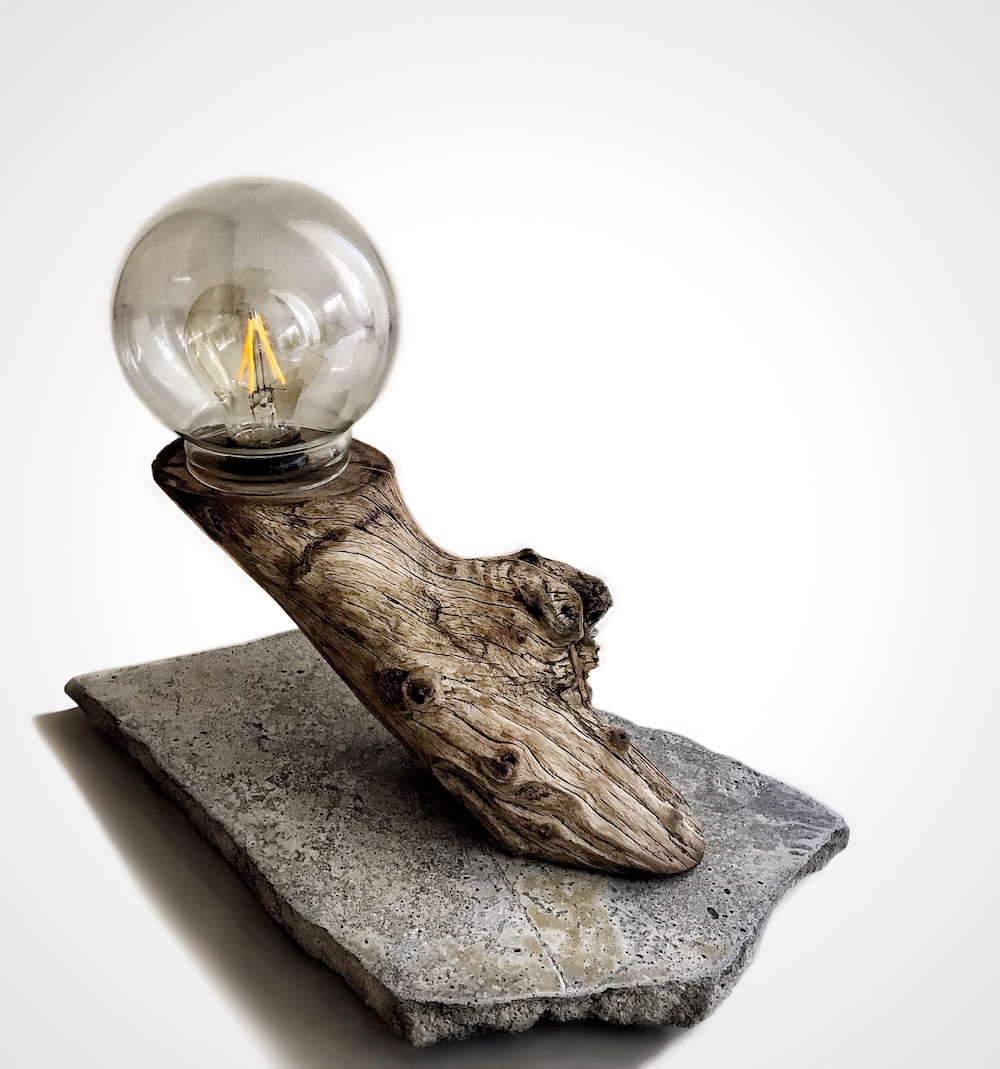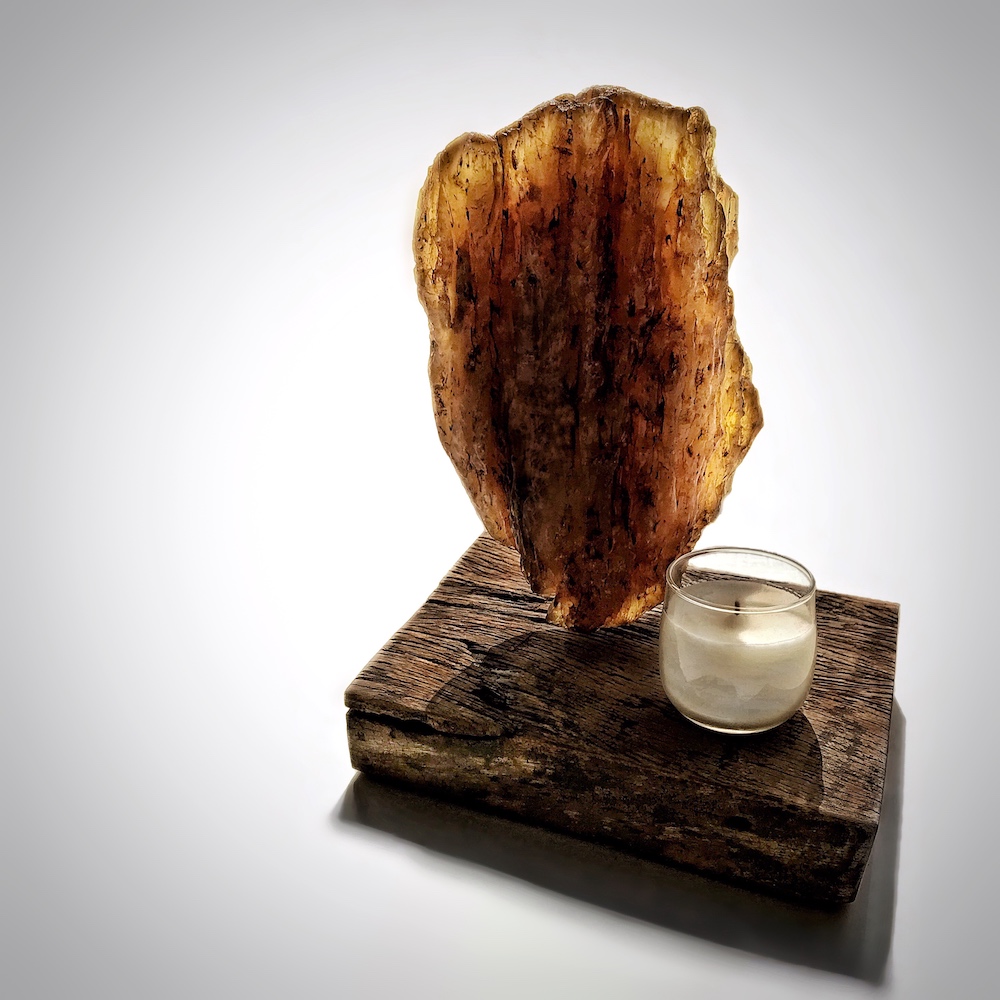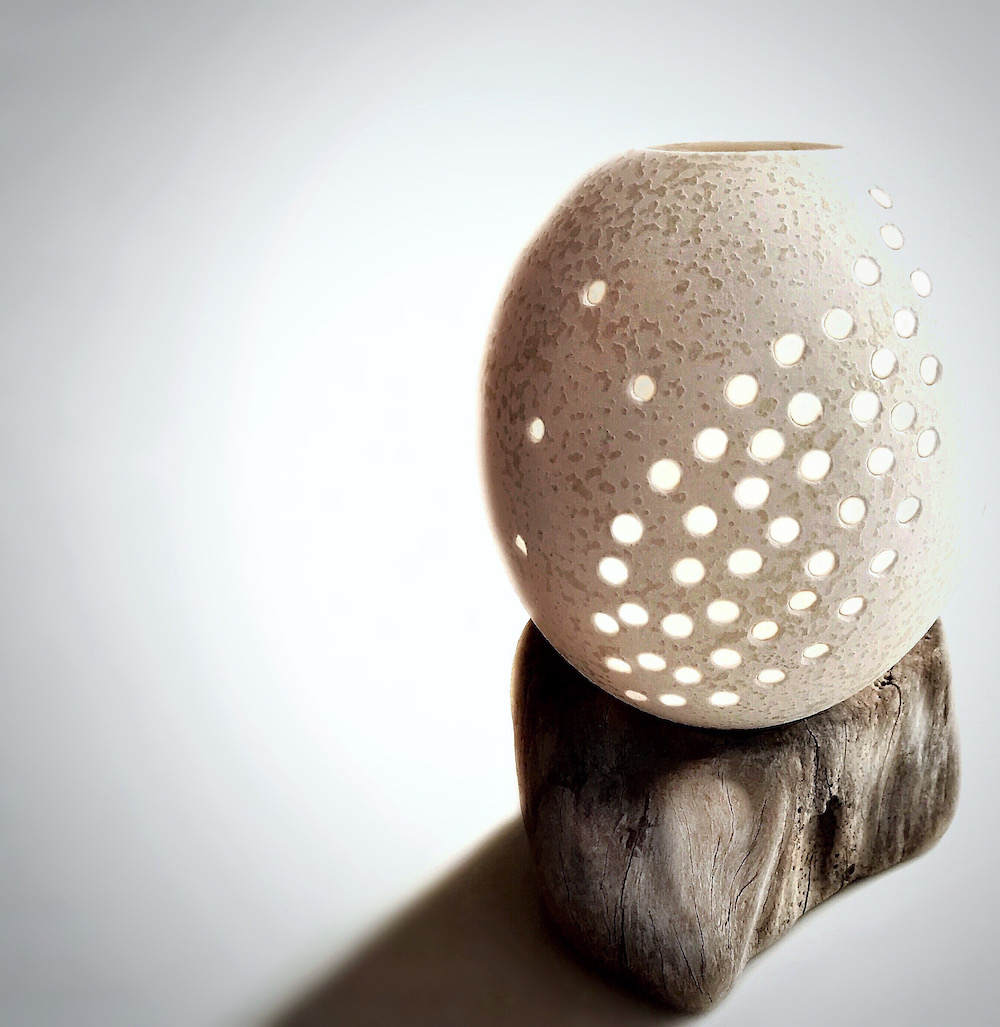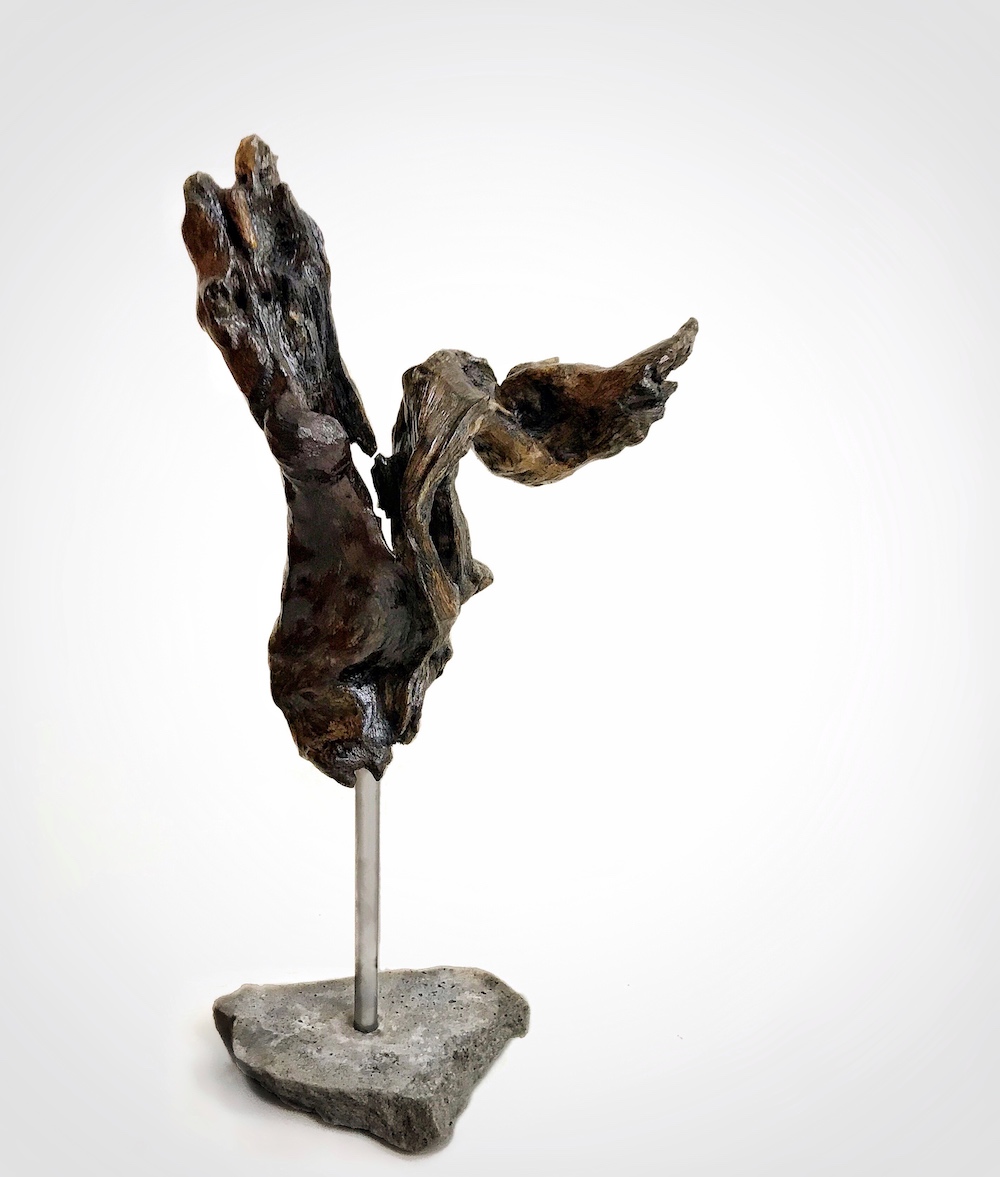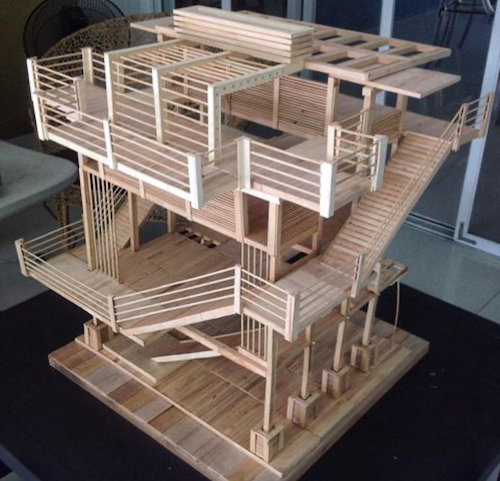Raymond Lauchengco holds online exhibit of art pieces he made during lockdown
ADVERTISEMENT

Welcome, Kapamilya! We use cookies to improve your browsing experience. Continuing to use this site means you agree to our use of cookies. Tell me more!
Raymond Lauchengco holds online exhibit of art pieces he made during lockdown
Leah C. Salterio
Published May 30, 2020 12:59 PM PHT
MANILA -- The Luzon-wide lockdown brought about by the COVID 19 pandemic allowed some artists to discover their new, artistic flair, totally different from singing or acting, though belated it may seem.
MANILA -- The Luzon-wide lockdown brought about by the COVID 19 pandemic allowed some artists to discover their new, artistic flair, totally different from singing or acting, though belated it may seem.
Singer-actor Raymond Lauchengco found it initially unbelievable that he could create art pieces and even display them in an exhibit. More importantly, he wants to raise money for displaced workers of the live event industry.
Singer-actor Raymond Lauchengco found it initially unbelievable that he could create art pieces and even display them in an exhibit. More importantly, he wants to raise money for displaced workers of the live event industry.
“Never in my wildest dreams did I think that one day, I would do an exhibit on social media of things I made during a pandemic and lockdown,” Lauchengco wrote on his Facebook and Instagram accounts. “It was definitely a surreal time for me. Maybe for you, too. Well, my wildest dream is happening, thanks to all of you!”
“Never in my wildest dreams did I think that one day, I would do an exhibit on social media of things I made during a pandemic and lockdown,” Lauchengco wrote on his Facebook and Instagram accounts. “It was definitely a surreal time for me. Maybe for you, too. Well, my wildest dream is happening, thanks to all of you!”
From the first day of the lockdown back in mid-March, Lauchengco found himself tinkering with a few tools at home. He realized he needed to do something productive and beneficial.
From the first day of the lockdown back in mid-March, Lauchengco found himself tinkering with a few tools at home. He realized he needed to do something productive and beneficial.
ADVERTISEMENT
“This pandemic really turned the world upside down,” Lauchengco said. “It has changed the lives of countless numbers of people, including me. I was seeing so much despair, gloom and suffering that I felt I needed to turn away and look towards something positive.”
“This pandemic really turned the world upside down,” Lauchengco said. “It has changed the lives of countless numbers of people, including me. I was seeing so much despair, gloom and suffering that I felt I needed to turn away and look towards something positive.”
Call it his “survival instinct” that kicked in at that time he engaged himself in this work. “I don't know, but I followed my instincts, brought out the few tools that I have and started carving, sawing, hammering, chiseling,” Lauchengco said. “At the end of the day, I realized that looking at something I had just made brought me comfort and fulfillment.”
Call it his “survival instinct” that kicked in at that time he engaged himself in this work. “I don't know, but I followed my instincts, brought out the few tools that I have and started carving, sawing, hammering, chiseling,” Lauchengco said. “At the end of the day, I realized that looking at something I had just made brought me comfort and fulfillment.”
INSPIRED BY COMMENTS
He readily created one art piece when the enhanced community quarantine (ECQ) was enforced. Not too long after, another one was finished and that gave him a sense of pride.
He readily created one art piece when the enhanced community quarantine (ECQ) was enforced. Not too long after, another one was finished and that gave him a sense of pride.
“By the time I started working on my third piece, people were already taking notice on Facebook and Instagram,” Lauchengco recalled. “They started to tell me how much they liked what I was doing. They started to encourage me and cheer me on.
“By the time I started working on my third piece, people were already taking notice on Facebook and Instagram,” Lauchengco recalled. “They started to tell me how much they liked what I was doing. They started to encourage me and cheer me on.
“By the fourth piece, people started to suggest I do an exhibit. Someone even challenged me to make 12-14 pieces by the end of the ECQ, because that would be a good number of works to have for an exhibit.”
“By the fourth piece, people started to suggest I do an exhibit. Someone even challenged me to make 12-14 pieces by the end of the ECQ, because that would be a good number of works to have for an exhibit.”
ADVERTISEMENT
The remarks on his social media were “extremely flattering” for Lauchengco. Yet, the thought of doing an exhibit was the farthest thing from his mind. “I was just thinking of taking my mind away from negative things,” he insisted. “But what really touched me was when people started to say that I was inspiring them.”
The remarks on his social media were “extremely flattering” for Lauchengco. Yet, the thought of doing an exhibit was the farthest thing from his mind. “I was just thinking of taking my mind away from negative things,” he insisted. “But what really touched me was when people started to say that I was inspiring them.”
He simply carried on what he was doing. “That drove me to continue because I felt that if I could make things that cheered people up, then the hard work I was doing was worth it,” he continued.
He simply carried on what he was doing. “That drove me to continue because I felt that if I could make things that cheered people up, then the hard work I was doing was worth it,” he continued.
“That's when I realized that something I started to do for my own benefit, turned in something more purposeful and that I could share it with others through social media.”
“That's when I realized that something I started to do for my own benefit, turned in something more purposeful and that I could share it with others through social media.”
He wasn’t working to meet a deadline. Neither was somebody breathing down his neck to work faster and finish the pieces. Yet, he simply continued everyday, sans any pressure from anybody.
He wasn’t working to meet a deadline. Neither was somebody breathing down his neck to work faster and finish the pieces. Yet, he simply continued everyday, sans any pressure from anybody.
“Regarding how long it took to make the pieces, it depends,” Lauchengco said. “Some I finished in a day or two. Some took weeks. I could have worked faster if I had power tools, but the only power tool I have is a drill.”
“Regarding how long it took to make the pieces, it depends,” Lauchengco said. “Some I finished in a day or two. Some took weeks. I could have worked faster if I had power tools, but the only power tool I have is a drill.”
ADVERTISEMENT
Admirably, he did all the work by his lonesome. “All the cutting and sawing was done by hand using a saw,” Lauchengco said. “At the end of the day, my back, arms and shoulders would be so sore that I had to sleep with several pads of Salonpas on my back.
Admirably, he did all the work by his lonesome. “All the cutting and sawing was done by hand using a saw,” Lauchengco said. “At the end of the day, my back, arms and shoulders would be so sore that I had to sleep with several pads of Salonpas on my back.
“But I would wake up in the mornings excited to continue working despite painful muscles. There was a sense of urgency that I felt. There was joy in creating. That's why I said in the intro that I wrote to my online exhibit, I had found my 'Ikigai'.”
“But I would wake up in the mornings excited to continue working despite painful muscles. There was a sense of urgency that I felt. There was joy in creating. That's why I said in the intro that I wrote to my online exhibit, I had found my 'Ikigai'.”
A concept that originated in Okinawa, “Ikigai,” according to Lauchengco, refers to finding the things that give your life purpose and meaning. “Something that makes you jump out of bed in the morning, excited and ready to face the day. It is interesting to note that some of the longest living people in the world are from the rural areas of Japan," he explained.
A concept that originated in Okinawa, “Ikigai,” according to Lauchengco, refers to finding the things that give your life purpose and meaning. “Something that makes you jump out of bed in the morning, excited and ready to face the day. It is interesting to note that some of the longest living people in the world are from the rural areas of Japan," he explained.
“They are always working, they never retire, they eat right, they sleep well and they are happy because they do the things that they find purpose in. That is 'Ikigai.’ It is called other things in other cultures. But basically it's about what drives you to live a meaningful life.”
“They are always working, they never retire, they eat right, they sleep well and they are happy because they do the things that they find purpose in. That is 'Ikigai.’ It is called other things in other cultures. But basically it's about what drives you to live a meaningful life.”
GROWING UP
Growing up in a modest home, Lauchengco, the younger brother of theater actress Menchu Lauchengco-Yulo, was not easily provided with everything his heart readily desired. “We were not rich, but we always had nice things in the house because my mother has impeccable taste,” he said. “My grandfather was a Jedi in carpentry and mechanics. He could make anything. That was my exposure as a child.”
Growing up in a modest home, Lauchengco, the younger brother of theater actress Menchu Lauchengco-Yulo, was not easily provided with everything his heart readily desired. “We were not rich, but we always had nice things in the house because my mother has impeccable taste,” he said. “My grandfather was a Jedi in carpentry and mechanics. He could make anything. That was my exposure as a child.”
ADVERTISEMENT
Lauchengco’s inspiration and challenge for the “Ikigai” art pieces were to try and make extraordinary things out of ordinary materials. “Materials that I had access to during the lockdown such as concrete rubble, salvaged wood, metal, twigs and branches,” he pointed out.
Lauchengco’s inspiration and challenge for the “Ikigai” art pieces were to try and make extraordinary things out of ordinary materials. “Materials that I had access to during the lockdown such as concrete rubble, salvaged wood, metal, twigs and branches,” he pointed out.
“I had a couple of ostrich eggs that Menchu gave me a long time ago, so I drilled holes or painted on them. I had empty wine bottles so I cut them. I had vintage wood lying around from a house renovation so I used that, too.
“I had a couple of ostrich eggs that Menchu gave me a long time ago, so I drilled holes or painted on them. I had empty wine bottles so I cut them. I had vintage wood lying around from a house renovation so I used that, too.
“I got the inspiration to turn what was ordinary into extraordinary because I thought that would be a good thing to do during these troubled times. Quite like turning the negative into positive. As they say, when life gives you lemons, make lemonade.”
“I got the inspiration to turn what was ordinary into extraordinary because I thought that would be a good thing to do during these troubled times. Quite like turning the negative into positive. As they say, when life gives you lemons, make lemonade.”
Starting on the first day of the lockdown, Lauchengco has now completed 14 awesome pieces for exhibit. “The exact number, I was challenged to make,” he beamed.
Starting on the first day of the lockdown, Lauchengco has now completed 14 awesome pieces for exhibit. “The exact number, I was challenged to make,” he beamed.
Part of the challenge was looking for materials for the art works. “You see, when the lockdown happened, everything shut down,” he lamented. “There were no hardware stores to buy materials from. I only had what I could find around the house and around the village.
Part of the challenge was looking for materials for the art works. “You see, when the lockdown happened, everything shut down,” he lamented. “There were no hardware stores to buy materials from. I only had what I could find around the house and around the village.
ADVERTISEMENT
“I got wood from empty lots, a friend gave me leaves from her garden to use as sand paper. She said that in the provinces, people use these leaves to scrub pots and pans because they are very rough. I dug up in the bodega to look for things I could recycle. I became a scavenger.”
“I got wood from empty lots, a friend gave me leaves from her garden to use as sand paper. She said that in the provinces, people use these leaves to scrub pots and pans because they are very rough. I dug up in the bodega to look for things I could recycle. I became a scavenger.”
QUARANTINE COLLECTION
All the art pieces were made during the lockdown. Then, Lauchengco photographed each one, without even applying the finishing touches yet. “I had wait for stores to open before I could buy materials like varnish, sanding sealer, wood preservative, real sand paper, etc.,” he said.
All the art pieces were made during the lockdown. Then, Lauchengco photographed each one, without even applying the finishing touches yet. “I had wait for stores to open before I could buy materials like varnish, sanding sealer, wood preservative, real sand paper, etc.,” he said.
“That's what I've been doing the week before the exhibit up to now. Applying the all the necessary finishing. As for the materials I used to make things? I used anything I could get my hands on.”
“That's what I've been doing the week before the exhibit up to now. Applying the all the necessary finishing. As for the materials I used to make things? I used anything I could get my hands on.”
“Ikigai” was launched last May 23 and the art pieces are now posted on Lauchengco’s Facebook and Instagram accounts. The full catalogue can also be accessed through Lauchengco’s website.
“Ikigai” was launched last May 23 and the art pieces are now posted on Lauchengco’s Facebook and Instagram accounts. The full catalogue can also be accessed through Lauchengco’s website.
There are a total of 14 pieces in the Quarantine Collection, with 12 up for sale. On the first day the art pieces were posted on social media, Lauchengco informed five have already been sold and inquiries continue to come in.
There are a total of 14 pieces in the Quarantine Collection, with 12 up for sale. On the first day the art pieces were posted on social media, Lauchengco informed five have already been sold and inquiries continue to come in.
ADVERTISEMENT
For those who consider purchasing any of the pieces on exhibit, part of the proceeds will be shared with displaced colleagues in the live event industry. “It really is true that there is a silver lining even in the darkest of clouds,” Lauchengco said.
For those who consider purchasing any of the pieces on exhibit, part of the proceeds will be shared with displaced colleagues in the live event industry. “It really is true that there is a silver lining even in the darkest of clouds,” Lauchengco said.
This is not the first time, though, that Lauchengco is holding an exhibit of his works. “I've done quite a number of exhibits before, but those featured my works in photography,” he said. “And I've always enjoyed making things.
This is not the first time, though, that Lauchengco is holding an exhibit of his works. “I've done quite a number of exhibits before, but those featured my works in photography,” he said. “And I've always enjoyed making things.
“I built my 12-year-old daughter [Nathalie] a four-storey, miniature condo, complete with a motorized elevator, a modular kitchen, sliding doors, rooftop garden, balconies and she loves it. She says she's the only girl in the world who has one.
“I built my 12-year-old daughter [Nathalie] a four-storey, miniature condo, complete with a motorized elevator, a modular kitchen, sliding doors, rooftop garden, balconies and she loves it. She says she's the only girl in the world who has one.
“I also made a house for her hamsters out of close to 5,000 popsicle sticks. I've also built things for my 10-year-old boy [David]. Last Halloween, I made him a robot suit that had a built in USB speaker, dancing lights, gears and other gadgets. It also had a little electric fan, so he wouldn't feel so hot inside the suit. Suffice it to say, I enjoy working with my hands and I love designing.”
“I also made a house for her hamsters out of close to 5,000 popsicle sticks. I've also built things for my 10-year-old boy [David]. Last Halloween, I made him a robot suit that had a built in USB speaker, dancing lights, gears and other gadgets. It also had a little electric fan, so he wouldn't feel so hot inside the suit. Suffice it to say, I enjoy working with my hands and I love designing.”
UNEXPECTED 2020
A number of unexpected things happened with the Lauchengco family when 2020 started. His father died of a stroke a week before the lockdown. His younger sister, Vicky, meanwhile, had an emergency situation, too.
A number of unexpected things happened with the Lauchengco family when 2020 started. His father died of a stroke a week before the lockdown. His younger sister, Vicky, meanwhile, had an emergency situation, too.
ADVERTISEMENT
“Her blood pressure shot up and all of a sudden, she couldn't walk or move her arms and needed emergency treatment in the hospital for three days,” Lauchengco said. “It was some kind of potassium deficiency that caused her muscles to contract to the point where she couldn't move them. My wife, Mia, became seriously ill. So much had already happened just before the ECQ was enforced.”
“Her blood pressure shot up and all of a sudden, she couldn't walk or move her arms and needed emergency treatment in the hospital for three days,” Lauchengco said. “It was some kind of potassium deficiency that caused her muscles to contract to the point where she couldn't move them. My wife, Mia, became seriously ill. So much had already happened just before the ECQ was enforced.”
Suddenly, all the bookings scheduled in Lauchengco’s performance calendar got cancelled, too. “They just vanished into thin air,” he sighed. He was supposed to guest in the repeat of Odette Quesada’s Philippine concert last week of March. “But you know what happened,” he said.
Suddenly, all the bookings scheduled in Lauchengco’s performance calendar got cancelled, too. “They just vanished into thin air,” he sighed. He was supposed to guest in the repeat of Odette Quesada’s Philippine concert last week of March. “But you know what happened,” he said.
“As of my directing and singing for this year? I just don't know. All artists and performers are on the same boat. Like other artists, I lost my bookings as a director of live events and as a singer. I think it's going to take a long time for the event industry to recover and even when it does, many things will change.”
“As of my directing and singing for this year? I just don't know. All artists and performers are on the same boat. Like other artists, I lost my bookings as a director of live events and as a singer. I think it's going to take a long time for the event industry to recover and even when it does, many things will change.”
When his wife got very sick, though not of COVID-19, Lauchengco realized he really needed to do something “to soothe my nerves and give me comfort,” he admitted. “I went outside and decided I needed to make something immediately.
When his wife got very sick, though not of COVID-19, Lauchengco realized he really needed to do something “to soothe my nerves and give me comfort,” he admitted. “I went outside and decided I needed to make something immediately.
“Creating things kept me going during the really difficult days. I think God knew I needed help, so He kept my mind occupied and my body active. That's how I was able to deal with all the stress. I began sawing, carving, sanding, hammering, smashing and taking things apart just to take my mind off the gloom I was feeling,” he said.
“Creating things kept me going during the really difficult days. I think God knew I needed help, so He kept my mind occupied and my body active. That's how I was able to deal with all the stress. I began sawing, carving, sanding, hammering, smashing and taking things apart just to take my mind off the gloom I was feeling,” he said.
ADVERTISEMENT
Initially, Lauchengco felt he was diverted to do all the art work to keep himself from feeling helpless over situations that he simply couldn't understand, much less control. “But when I started seeing finished pieces at the end of the day, the fulfillment of having made something with my hands comforted me, so I decided to press on and push myself harder with every piece that followed,” he said.
Initially, Lauchengco felt he was diverted to do all the art work to keep himself from feeling helpless over situations that he simply couldn't understand, much less control. “But when I started seeing finished pieces at the end of the day, the fulfillment of having made something with my hands comforted me, so I decided to press on and push myself harder with every piece that followed,” he said.
Making things soon became Lauchengco’s “ikigai” – “a beautiful Japanese word I learned about in my church” – that refers to the reason you get out of bed excitedly in the mornings, when it was so tempting to just stay there and mope.
Making things soon became Lauchengco’s “ikigai” – “a beautiful Japanese word I learned about in my church” – that refers to the reason you get out of bed excitedly in the mornings, when it was so tempting to just stay there and mope.
“I read somewhere that it is during difficult times that you discover there are things you can do that you never thought you could,” Lauchegco said. “Perhaps, that is true. So despite these strange and incomprehensible times, when so many, including me, have no idea when the next job will come, I find that I can still be grateful because I learned something new about myself. And I have been given the time to explore a different path.”
“I read somewhere that it is during difficult times that you discover there are things you can do that you never thought you could,” Lauchegco said. “Perhaps, that is true. So despite these strange and incomprehensible times, when so many, including me, have no idea when the next job will come, I find that I can still be grateful because I learned something new about myself. And I have been given the time to explore a different path.”
Lauchengco was all the more motivated to try and do something to help when he also saw his wife raising funds for displaced tricycle drivers in their area. “My wife is my rock,” he said of his life partner. “She is a huge part of everything I do, even when she isn't aware of it.”
Lauchengco was all the more motivated to try and do something to help when he also saw his wife raising funds for displaced tricycle drivers in their area. “My wife is my rock,” he said of his life partner. “She is a huge part of everything I do, even when she isn't aware of it.”
Hence, part of the proceeds of Lauchengco’s “Ikigai” exhibit will be given to displaced workers of the live event industry. “They are my colleagues in production, because I have been directing events for the last 16 years. They are the unsung heroes of concerts and all sorts of events," he said.
Hence, part of the proceeds of Lauchengco’s “Ikigai” exhibit will be given to displaced workers of the live event industry. “They are my colleagues in production, because I have been directing events for the last 16 years. They are the unsung heroes of concerts and all sorts of events," he said.
ADVERTISEMENT
“They are carpenters, electricians, technicians, drivers, utility personnel, etc. They build the set and stage, hang speakers and lights, etc. There would be no shows without them, and for nearly three months now, they are all jobless.”
“They are carpenters, electricians, technicians, drivers, utility personnel, etc. They build the set and stage, hang speakers and lights, etc. There would be no shows without them, and for nearly three months now, they are all jobless.”
Convinced now, more than ever, that God can work through any circumstance, no matter how dismal, Lauchengco believes “things will turn around in the most unexpected and surprising ways.”
Convinced now, more than ever, that God can work through any circumstance, no matter how dismal, Lauchengco believes “things will turn around in the most unexpected and surprising ways.”
He acknowledged this COVID-19 crisis has amazingly taught everyone to rediscover kindness, compassion and a genuine desire to help each other. “Our old ways of fending only for ourselves needs to change because we are all in this together,” Lauchengco maintained. “This is the perfect time for all of us to reboot.”
He acknowledged this COVID-19 crisis has amazingly taught everyone to rediscover kindness, compassion and a genuine desire to help each other. “Our old ways of fending only for ourselves needs to change because we are all in this together,” Lauchengco maintained. “This is the perfect time for all of us to reboot.”
ADVERTISEMENT
ADVERTISEMENT




